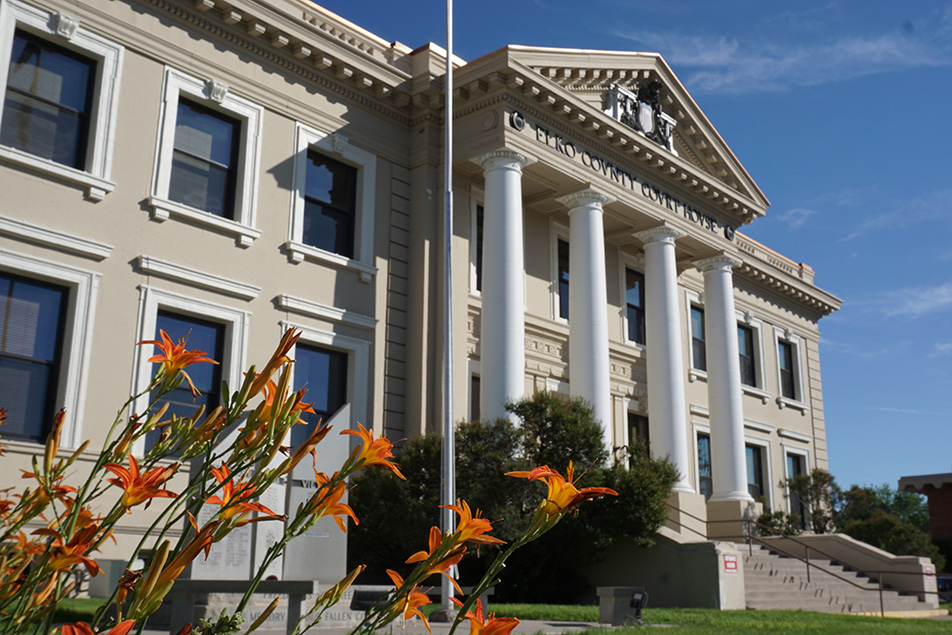Elko County Courthouse Rehabilitation Recommendations
Location:
Elko, NevadaThe Elko County Courthouse in Elko, Nevada was constructed in 1911 in the city of Elko, Nevada. It is listed in the National Register of Historic Places. In 2017, Judge Nancy Porter desired to rehabilitate the district courtroom to better reflect its historic appearance. Is Architecture served as the Historic Preservation Architect and Historic Preservation Specialist on a multiple-firm team to deliver recommendations for the historic rehabilitation of the courtroom.
The courthouse as it stands today is not the original courthouse on the site. From 1869 to 1910, an elegant Greek Revival structure fulfilled the judicial role of the newly formed county. This structure was demolished to make way for the Neo-Classical successor. A larger courthouse was needed, and the new building was commissioned to represent the growing and prosperous county. The current Elko County Courthouse is a two-story, Neo-Classical style building constructed in 1911 according to designs by William H. Weeks and erected by the Sellman Brothers construction company of Fallon, Nevada. The interior of the building has a center hall plan flanked by offices. Access to the second-story courtroom is by way of a central stair. The building remains in use as the county courthouse and retains a high degree of architectural integrity.
The courthouse has experienced two fires, one in October of 1936, and the other in September of 1941. The first fire occurred in the lower levels of the building, not affecting the historic courtroom. The fire of 1941, reported in the Elko Daily Free Press, erupted in the courtroom from the ignition of turpentine fumes during a refurbishment. Arthur E. Spear, foreman hired for the decoration of the courtroom, reported how the fire began. His colleague, “Lefty” lit a match in the midst of heavy turpentine fumes used to strip the paneling behind the judge’s rostrum. Damage to the rostrum and jury box was sustained. The fire led to the redesign of the paneling behind the judge’s rostrum and the wainscoting throughout the courtroom.


